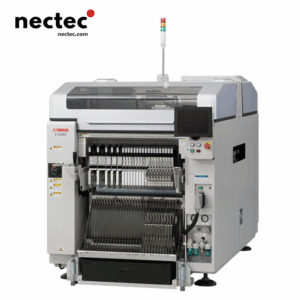The rise of LED technology has revolutionized various industries, offering energy-efficient and long-lasting lighting solutions. As the demand for LED chips continues to grow, manufacturers are seeking innovative ways to enhance their production processes. One such advancement is the incorporation of pick and place machines. In this blog post, we will delve into the significance of pick and place machines in LED chip manufacturing, exploring their functionality, benefits, and future trends in this dynamic sector.
Entendendo as máquinas Pick and Place
At its core, a pick and place machine is an automated device used to position components accurately on a PCB (printed circuit board). They are integral to various manufacturing processes where precision placement of small components is essential, including LED chip production. These machines utilize high-speed robotic arms equipped with suction cups or grippers to pick components from a feeder and place them onto the designated spots on the PCB.
The Importance of Accuracy in LED Chip Production
In LED manufacturing, precision is paramount. Any misplacement can lead to inefficiencies, increased rejects, and ultimately, higher production costs. Pick and place machines address these challenges by ensuring that every component, including LED chips, is placed correctly and swiftly. This efficiency not only minimizes waste but also maximizes the output of high-quality products.
Principais benefícios do uso de máquinas Pick and Place
1. Velocidade e eficiência aprimoradas
One of the most commendable features of pick and place machines is their ability to operate at high speeds, achieving placements at a rate of thousands of components per hour. This accelerated production cycle is essential for meeting the increasing demand for LED chips in various applications, from residential lighting to intricate electronic devices.
2. Precisão aprimorada
With high-definition cameras and sensors, modern pick and place machines can achieve unprecedented levels of accuracy. They minimize the risk of human error—often a significant factor in traditional manufacturing setups—allowing for incredible positioning precision that is especially beneficial for delicate and miniature components like LED chips.
3. Redução de custos
While the initial investment in pick and place machines may seem substantial, the long-term savings can be significant. By reducing labor costs and minimizing waste, manufacturers can see a remarkable ROI (return on investment) within a short timeframe. The enhanced throughput of high-quality LED chips ultimately leads to increased profitability.
4. Flexibilidade e escalabilidade
Modern pick and place machines are designed to adapt to varying production requirements. Whether you’re producing a small batch of specialized LED chips or a large volume of standard products, these machines can easily be reconfigured to meet the specific needs of each production run. This adaptability is crucial in today’s fast-paced market environment.
Inovações tecnológicas em máquinas Pick and Place
The automation landscape is continually evolving, and pick and place machines have not been left behind. Recent advancements focus on enhancing their design and functionality to better meet the demands of LED production.
1. Sistemas avançados de visão
Equipped with cutting-edge vision systems, modern pick and place machines can inspect components in real-time, ensuring that only defect-free parts are used in production. These systems can detect color variations, misalignment, and other inconsistencies, enhancing the quality control process.
2. Robótica colaborativa (Cobots)
Collaborative robots, or cobots, are increasingly being used in conjunction with pick and place machines. These robots can work alongside human operators, enhancing productivity without compromising safety. Cobots can handle repetitive tasks, allowing human workers to focus on more complex responsibilities within the production environment.
Choosing the Right Pick and Place Machine for Your LED Production Line
Investing in a pick and place machine is a significant decision for any LED manufacturer. To ensure you’re selecting the right machine for your needs, consider the following factors:
1. Volume de produção
Assess your production volume requirements before making a decision. High-throughput machines may be necessary for mass production, while lower-capacity options may suffice for smaller operations.
2. Compatibilidade de componentes
Ensure the chosen machine can accommodate the specific sizes and types of LED chips and other components in your production line. Compatibility is critical to maintaining efficiency.
3. Facilidade de uso
Consider the user interface and programming capabilities of the machine. Machines that offer intuitive software and ease of use can significantly reduce training time and improve operational efficiency.
Tendências futuras da tecnologia Pick and Place
As technology advances, the future of pick and place machines looks promising. Innovations such as AI integration, predictive maintenance, and IoT connectivity are on the rise, aiming to create even smarter manufacturing environments. Predictive algorithms will help anticipate component supply needs, while IoT technology will enable real-time monitoring and adjustments to optimize production efficiency. The future promises an even more automated and integrated approach to PCB assembly and LED chip manufacturing.
Conclusão
In a world increasingly driven by technology and efficiency, the introduction of pick and place machines represents a significant leap forward in LED chip production. Their ability to enhance speed, precision, and flexibility is transforming the manufacturing landscape. As we continue to innovate and adapt to the demands of the industry, pick and place machines will become even more integral to the success of LED manufacturers across the globe.






